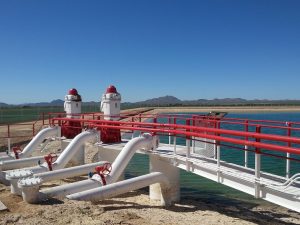Choosing a career can be a daunting task for many who are just starting their professional careers.
In the skills trade, two of the most popular careers are electrician and plumber.
Electricians and plumbers are needed everywhere, and these two professions have a lot in common.
However, some aspects make them very different from each other.
So on this page, we’ll explore both of them and see which career suits you best.
Duties and Responsibilities
Electrician
Electricians are responsible for setting up wiring and equipment that runs electricity into structures and around them.
They use various tools to ensure the electrical systems are safe and adhere to the electrical codes.
They work in various settings, mostly in residential, commercial, and industrial construction.
For instance, as outdoor linemen, they will install and maintain electrical circuits that connect buildings to power plants.
Plumber
Plumbers do more than fix kitchens and toilets.
They install and maintain pipes that transport gasses, materials, and liquids in and out of buildings.
Just like electricians, they take on projects in residential, commercial, and industrial construction.
Career Training
Electrician
To become a journeyman electrician, you need to complete a four– to five–year apprenticeship program.
During the program, you’ll receive hands-on training at the job sites.
It usually takes place during standard work hours, up to 40 hours a week.
You’ll also receive a salary, which increases through appraisal as you progress in your apprenticeship.
To get an apprenticeship, you’ll have to meet the program qualifications and pass the exam and interviews.
You can increase your entry chances by taking an electrician certificate or degree program at a trade school.
Plumber
Career training for plumbers is the same as for electricians—through a plumbing apprenticeship.
Depending on where you live, the apprenticeship program can take four to five years.
Plumbing apprentices are also paid for their work.
To apply, you should look up the apprenticeship requirements in your area as the regulations can vary from state to state
Potential Salary
Electrician
As of May 2021, the Bureau of Labor Statistics (BLS) reported the following salary information for electricians:
Average Salary
| Percentile | Hourly Wage | Annual Wage |
| 10% | $17.80 | $37,020 |
| 25% | $22.55 | $46,900 |
| 50% | $28.87 | $60,040 |
| 75% | $37.19 | $77,350 |
| 90% | $47.98 | $99,800 |
Top Paying States
| State | Hourly Mean Wage | Annual Mean Wage |
| Illinois | $39.97 | $83,140 |
| New York | $39.28 | $81,700 |
| Oregon | $39.04 | $81,200 |
| Alaska | $38.45 | $79,980 |
| New Jersey | $38.43 | $79,940 |
Top Paying Industries
| Industries | Hourly Mean Wage | Annual Mean Wage |
| Natural gas distribution | $50.44 | $104,920 |
| Promoters of performing arts, sports, and similar events | $48.91 | $101,740 |
| Professional and commercial equipment and supplies merchant wholesalers | $45.80 | $95,260 |
| Monetary authorities – Central bank | $45.53 | $94,710 |
| Scheduled air transportation | $44.50 | $92,550 |
Plumber
As of May 2021, BLS reported the following salary information for plumbers:
Average Salary
| Percentile | Hourly Wage | Annual Wage |
| 10% | $17.65 | $36,700 |
| 25% | $22.40 | $46,590 |
| 50% | $28.79 | $59,880 |
| 75% | $37.45 | $77,890 |
| 90% | $48.04 | $99,920 |
Top Paying States
| State | Hourly Mean Wage | Annual Mean Wage |
| Illinois | $41.44 | $86,200 |
| Alaska | $41.01 | $85,300 |
| Massachusetts | $40.43 | $84,090 |
| New Jersey | $39.78 | $82,740 |
| Oregon | $39.17 | $81,470 |
Top Paying Industries
| Industries | Hourly Mean Wage | Annual Mean Wage |
| Petroleum and coal products manufacturing | $43.97 | $91,450 |
| Electric power generation, transmission, and distribution | $43.87 | $91,240 |
| Pharmaceutical and medicine manufacturing | $43.12 | $89,700 |
| Other pipeline transportation | $42.51 | $88,410 |
| Technical and trade schools | $42.42 | $88,240 |
Job Outlook
Electrician
The BLS projected a 7% employment growth for the electrician career from 2021 to 2031.
This means that there will be about 79,900 average job openings each year throughout the decade.
The reason for this growth lies in the popularity of alternative power generation (e.g., solar and wind) in new building projects.
| Employment, 2021 | 711,200 |
| Projected employment, 2031 | 761,400 |
| Percentage of change | 7% |
Plumber
The BLS projected a 2% employment growth for the plumbing career from 2021 to 2031.
This means that there will be about 48,600 average job openings each year throughout the decade.
The reason for this growth lies in two factors:
- Increasing number of new construction buildings
- Demand for maintenance and repair of plumbing systems in existing residences and other buildings
| Employment, 2021 | 469,000 |
| Projected employment, 2031 | 478,000 |
| Percentage of change | 2% |
Which Career Is for You?
The truth is, both careers are great choices.
Electricians and plumbers make a good living, well above the national average, and have a great job outlook.
The decisive factor will be which trade is best suited for your skills.
If you find that you’re good with electrical circuits, go for the electrician career.
If you’re good with pipes and fixtures, then go for a plumbing career.
Also, you should talk to people working in both trades to understand and see which career best fits you.
This page is also available in Spanish.










